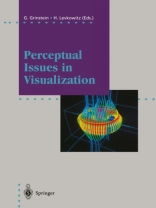With the increase in the amount and dimensionality of scientific data collected, new approaches to the design of displays of such data have become essential. The designers of visual and auditory displays of scientific data seek to harness perceptual processes for data exploration. The general aim is to provide ways for raw data, and the statistical and mathematical structures they comprise, to "speak for themselves" and, thereby, enable scientists to conduct exploratory, in addition to confirmatory analyses of their data. The present primary approach via visualization depends mainly on coding data as positions of visually distinguishable elements in a two- or three- dimen- sional euclidean space, e.g., as discrete points comprising clusters in scatter-plot displays and as patches comprising the hills and valleys of statistical surfaces. These displays are immensely effective because the data are in a form that evokes natural perceptual processing of the data into impressions of the presence and spatial disposition of apparent materials, objects, and structures in the viewers apparent physical environment. The problem with this mode of display, however, is that its perceptual potency is largeiy exhausted at dimension three, while we increasingly face the need to explore data of much greater dimensionality. The challenge posed for visualization researchers is to develop new modes of display that can push the dimensionality of data displays higher while retaining the kind of perceptual potency needed for data exploration.
Georges Grinstein & Haim Levkowitz
Perceptual Issues in Visualization [PDF ebook]
Perceptual Issues in Visualization [PDF ebook]
Köp den här e-boken och få 1 till GRATIS!
Språk Engelska ● Formatera PDF ● ISBN 9783642790577 ● Redaktör Georges Grinstein & Haim Levkowitz ● Utgivare Springer Berlin Heidelberg ● Publicerad 2013 ● Nedladdningsbara 3 gånger ● Valuta EUR ● ID 5782032 ● Kopieringsskydd Adobe DRM
Kräver en DRM-kapabel e-läsare












